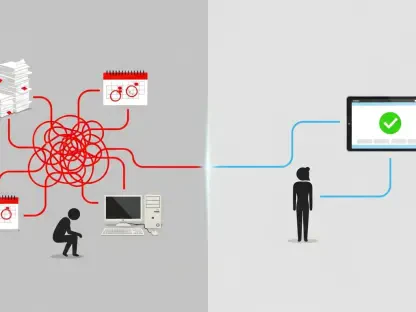Simon Glairy is an influential figure in the fields of insurance and Insurtech, known for his expertise in risk management and AI-driven solutions. His insights into innovative partnerships, like the one between Gallagher Bassett and Treeapp, offer a glimpse into how companies are integrating environmental initiatives with core business operations to create measurable impact.
Can you tell us more about the partnership between Gallagher Bassett and Treeapp?
The collaboration between Gallagher Bassett and Treeapp emerged from a shared vision of combining fraud prevention with environmental goals. Gallagher Bassett brings its expertise in claims management and fraud detection, while Treeapp offers its proficiency in reforestation and sustainable practices. This synergy allows the initiative not only to improve insurance processes but to also contribute positively to the environment by planting trees based on fraud prevention savings.
What inspired the development of the ‘Net Zero Tolerance to Fraud’ program?
The ‘Net Zero Tolerance to Fraud’ program was conceived out of the need for more structured and impactful fraud management solutions when DHL Supply Chain approached Gallagher Bassett. The importance of linking these efforts to reforestation was to create a tangible contribution to sustainability, addressing both business efficiency and environmental responsibility in one unified effort.
Can you elaborate on why the program runs from July 2024 to 2029?
This five-year period allows Gallagher Bassett to fully integrate and refine the fraud management solution across its operations and ensure the effectiveness of the reforestation initiative. The long-term nature of the project gives room to adapt and meet evolving goals, with the ultimate ambition being a robust environmental impact aligned with corporate objectives.
How have the initial results of the program surpassed expectations?
The initial outcomes have exceeded expectations, with the identification of fraud cases meeting the required criteria to trigger reforestation efforts. As a result of heightened awareness and improved detection, the first 500 trees were planted in partnership with Treeapp, showcasing the potential of integrating AI-driven fraud solutions with environmental contributions.
Could you explain the significance of using artificial intelligence in fraud detection for GB?
Artificial intelligence plays a pivotal role in enhancing fraud detection capabilities by analyzing vast amounts of data to identify patterns and flag irregularities. This enables faster and more accurate identification of suspicious claims, which reduces the time and resources spent on fraudulent activities and increases operational efficiency.
How does the “Net Zero Tolerance to Fraud” initiative align with the broader environmental goals of Gallagher Bassett and DHL Supply Chain?
Gallagher Bassett and DHL Supply Chain are committed to achieving Net Zero emissions by 2050. The fraud initiative aligns with these environmental goals by concretely contributing to sustainability through tree planting, thus embedding ecological responsibility into business practices.
How does Treeapp’s digital tracking of reforestation efforts work?
Treeapp utilizes a comprehensive digital platform to monitor and track reforestation projects. This system provides real-time data and metrics on the progress of tree planting, ensuring transparency and accountability in achieving sustainability objectives.
What other sectors is Gallagher Bassett currently expanding its presence into?
Gallagher Bassett is broadening its reach into emerging sectors such as healthcare, marine and cargo, and cyber liability. These areas are crucial as they offer new opportunities for growth and innovation in risk management, complementing their existing portfolio and addressing evolving market needs.
John Fearn mentioned gains in both claims performance and environmental contribution. Can you provide specific examples?
The initiative has improved claims performance by reducing the incidence of fraud, thereby optimizing resource allocation and operational efficiency. Environmentally, the commitment to plant 500 trees annually reflects a substantial contribution to reforestation and carbon offsetting, manifesting the dual benefits of the program.
Are there any plans to expand the number of trees planted annually based on future success?
Expanding tree planting targets will depend on the continued success of fraud prevention measures. If fraud detection saves more money and meets the criteria set within the program’s goals, it could lead to increased reforestation commitments, further enhancing the environmental benefits.
How do you see the role of sustainability evolving in the insurance industry?
Sustainability within insurance is poised to become an integral part of operations, as companies increasingly recognize the importance of integrating environmental efforts into their business models. This shift is crucial for fostering resilience and long-term viability in a world facing growing ecological challenges.
Do you have any advice for our readers?
Incorporating sustainability into business strategies offers numerous advantages beyond mere compliance. It enhances brand value, inspires innovation, and builds a more resilient future, encouraging companies to look for creative ways to align their operations with environmental responsibility.









